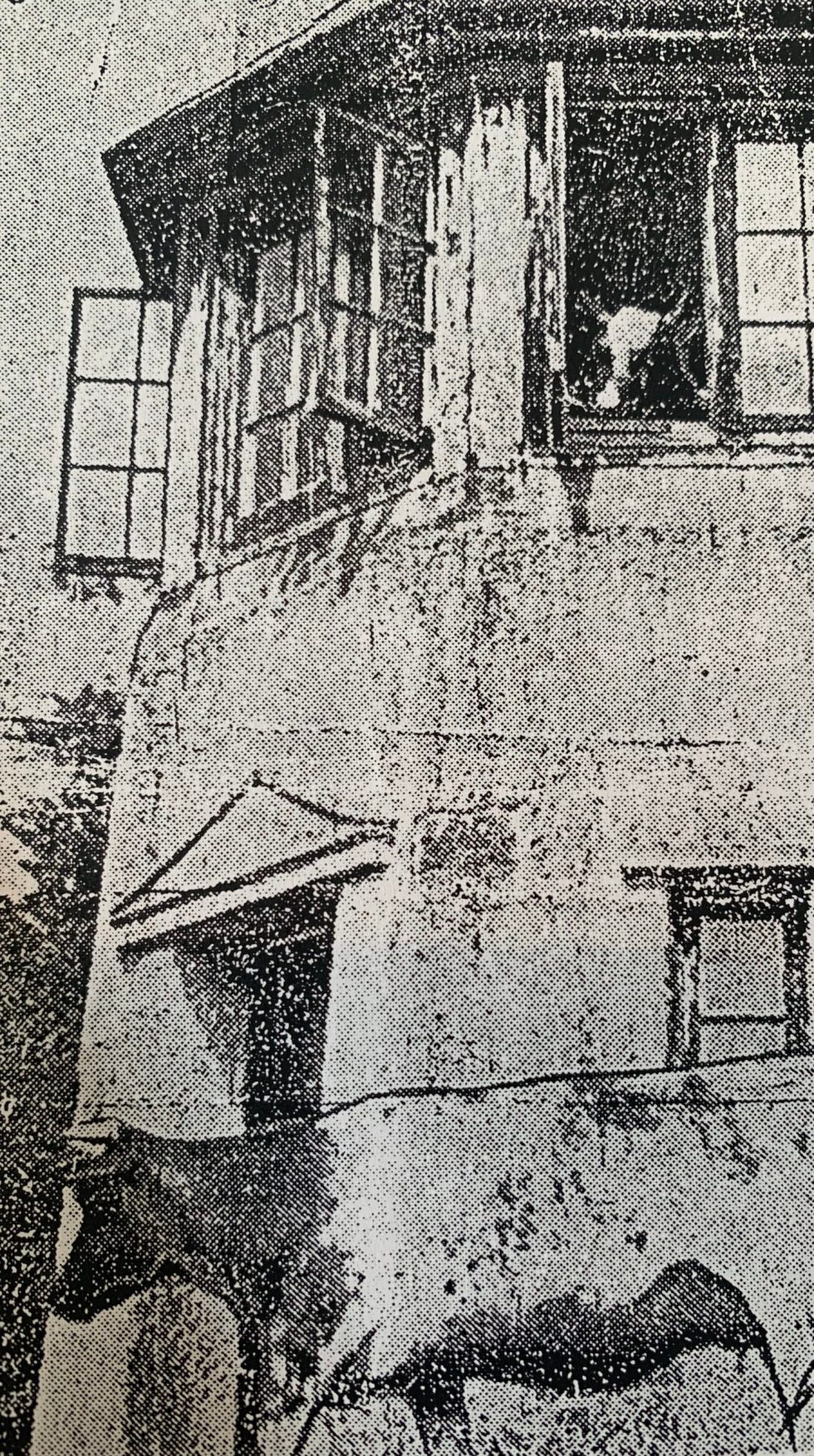Sedbergh sits in that part of the Yorkshire Dales National Park which is actually in modern day Cumbria, although historically the town was part of the West Riding of Yorkshire. This little summerhouse now belongs to Sedbergh School, which was established in the town in 1525, and their charitable foundation recently led a restoration project to restore the building for community use.

https://www.francisfrith.com/sedbergh/sedbergh-akay-lodge-1923_74563
The gazebo known locally as The Pepperpot, or just Pepperpot, was an ornamental feature of the Akay estate on the edge of Sedbergh. In 1893 the estate was bought by Charles Edward Taylor, a chemist and druggist of the town, and a few years later he replaced the Georgian villa with a sprawling mansion which was confusingly known as Akay House, Hall, or Lodge, but as time passed just Akay. He also extended the existing park to create ‘delightfully disposed gardens and grounds’, and built the summerhouse just outside his garden in open pasture high above the river Rawthey. Taylor was remembered as an ‘ardent lover of nature’, and would have enjoyed the distant views from the summerhouse. He was also a great fan of the chase and the summerhouse would have provided views of the Sedbergh Hounds, of which he was ‘the popular master’, in action.
In 1897 John Hutton (1866-1937) of Kendal designed a new entrance lodge for the estate, and he was the ‘Architect & Surveyor’ to whom enquiries were to be addressed when the estate later came on the market. With these connections, Hutton may also have designed the mansion and summerhouse, although no evidence appears to survive. The summerhouse is not marked on the 6″ or 25″ Ordnance Survey maps which were revised in 1909-1912, so it was probably built soon after the latter date.
Taylor died in 1924, and once his affairs were settled the Akay estate was offered for sale in 1926. In the particulars, what became known as Pepperpot was described as a ‘stone-built two-storey Summerhouse … providing fine views’. There was little interest from potential purchasers for a decade, until in 1936 the governors of Sedbergh School agreed a deal to buy the property. Sadly their plans for the mansion did not come to fruition and in 1938 the governors decided that the ‘whole of the interior and exterior fixtures and fittings’ were to be sold at auction. The house was then demolished, and the gardens and summerhouse largely abandoned.

In 1948 a curious cow took advantage of the open door and wandered up the stairs to admire the view. Mr Greasley, a local man, was passing and captured the image which was then published in the local paper, the Westmorland Gazette. It was reported that it took five men with ropes to manoeuvre the animal back down to the field, and the tower was then locked up to prevent any further bovine belvedere bravado. Sadly, the tower was then allowed to become derelict, and over the next few decades the upper storey collapsed, leaving a sad single-storey shell.

In Spring 2015 the Heritage Lottery Fund awarded Sedbergh School Foundation a grant of £76,300 to restore the structure, on the basis that it would then be available for use by the local community. Further funding came from the Yorkshire Dales National Park Authority.

There is a local tale that the summerhouse was built for Taylor’s daughter Elizabeth Annie, born in 1889, who is said to have had tuberculosis and needed to live in isolation in Pepperpot between the age of 18 and her death aged 21. Happily this is just a story, and Elizabeth Annie married John Marmaduke Conder, of nearby Birks House, in 1913 and lived well into her 80s.
The Pepperpot can be visited from public footpaths, but please respect the local community and wait until the coronavirus is under control. Find out more about Sedbergh here https://www.sedbergh.org.uk/activities/
This post expands on earlier research by the late, and greatly missed, Helen Lazenby.






Gand says:
Very interesting. It seems that in better days, assault on the pepperpot will be on the agenda.
Editor says:
Very good Gand! Yes, one to add to the long list of lovely things to look forward to.
Gwyn says:
Stories of cows climbing follies are not uncommon, but the joy of seeing actual photographic evidence is ineffable. Mlle La Flâneuse, tu t’es surpassée!
Editor says:
Merci M. Headley. Je Rougis
Ron Howard says:
My stepfather used to work at Akay. When Mr Taylor hit hard times when railway shares nosedived my stepfathers great uncles, Leonard and Richard Morphet who farmed the School farm, Lofthouse, which adjoined Akay land, were offered the whole estate for £2000, They were a bit afraid to take on such a fair sized estate, even though they had the money, so turned him down. What a wonderful thing hindsight is
Editor says:
What a lovely anecdote. They missed out on a beautiful estate. Thanks for commenting.